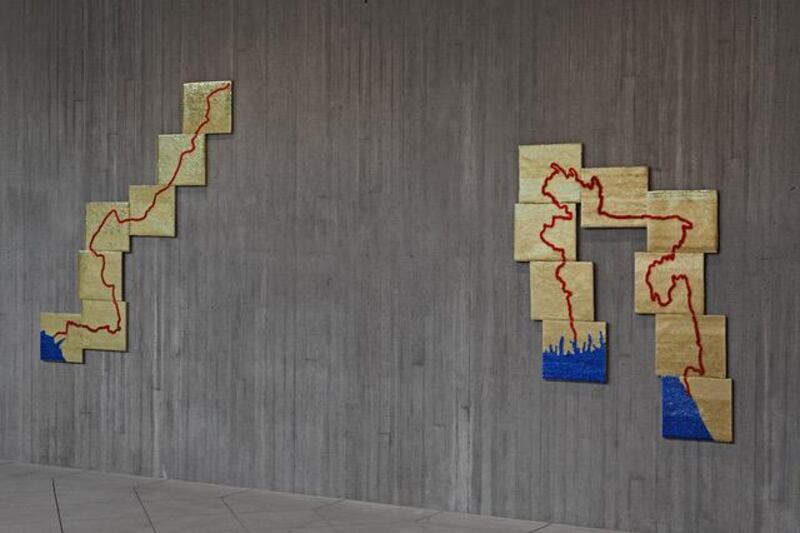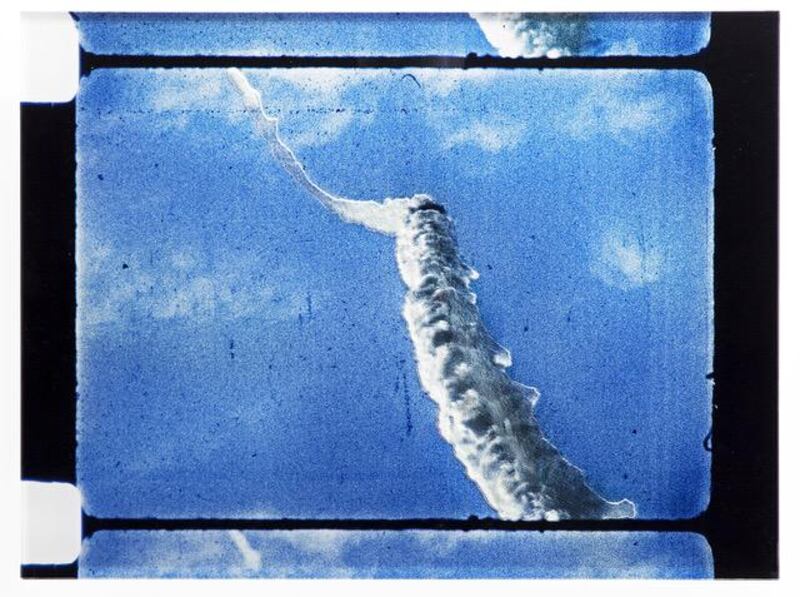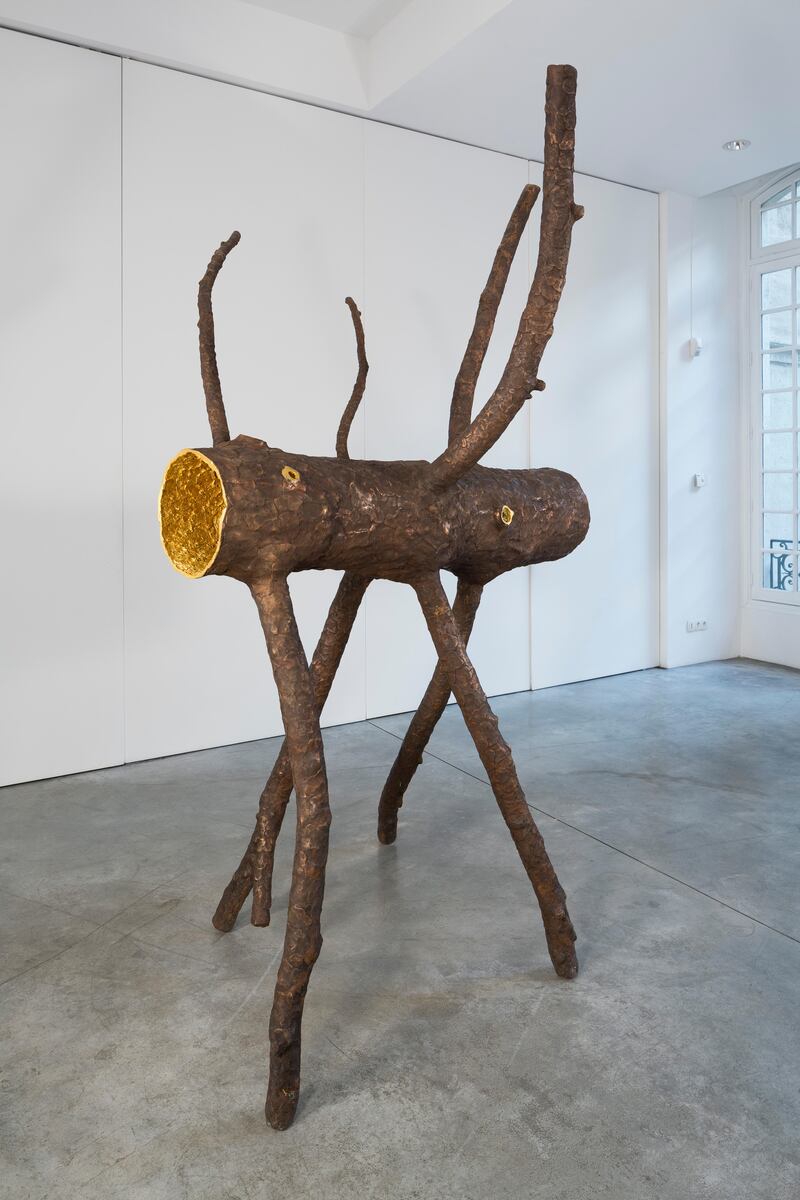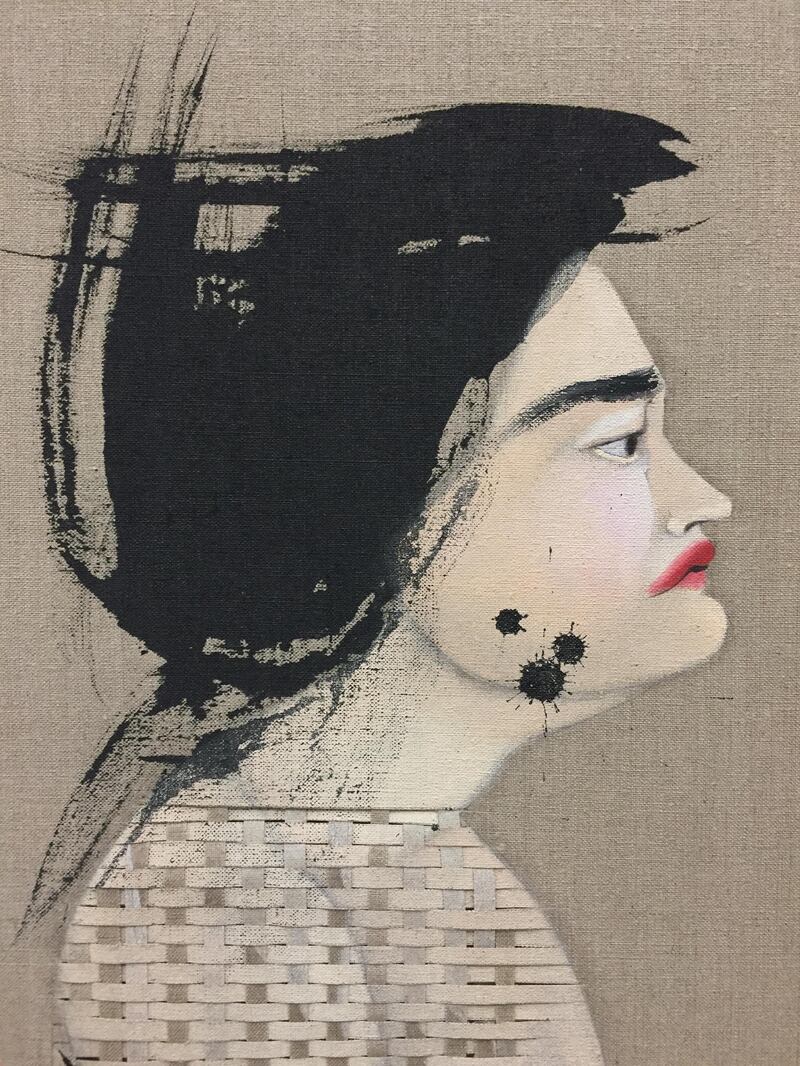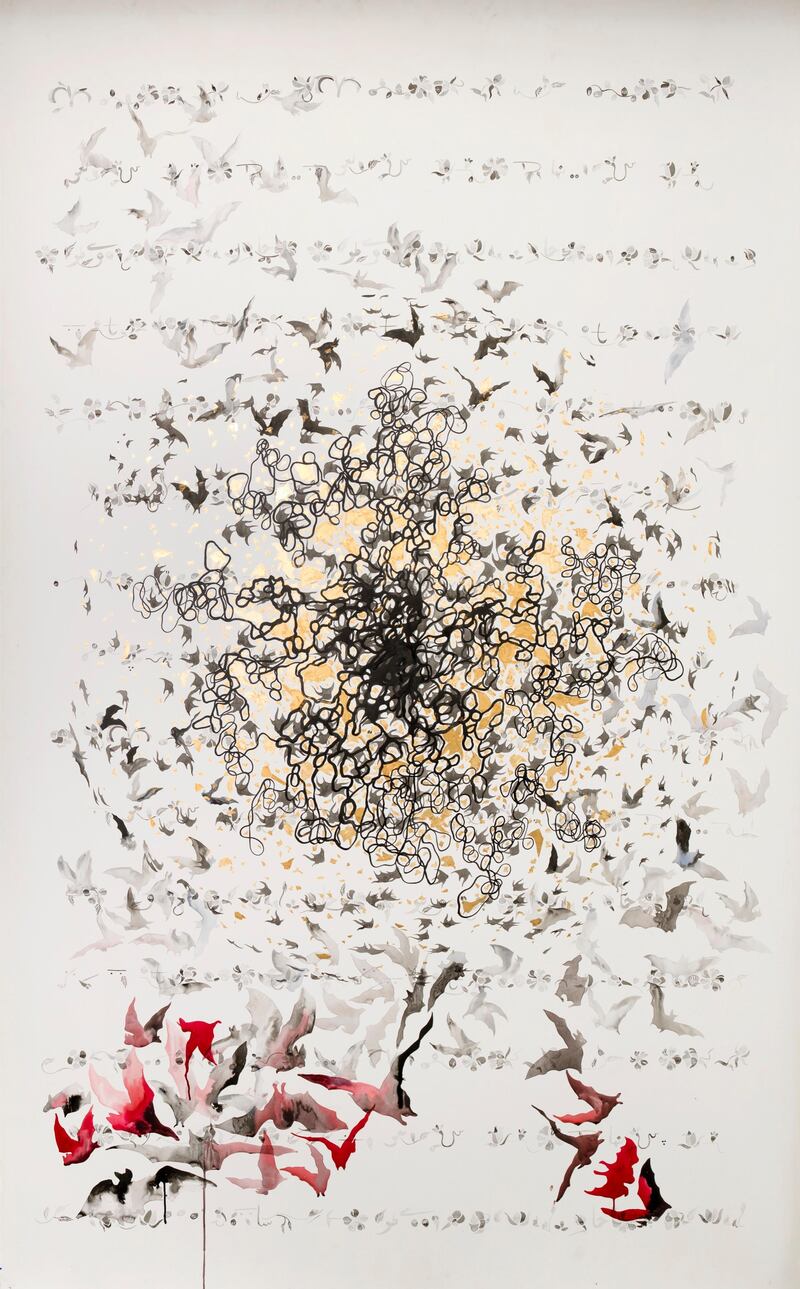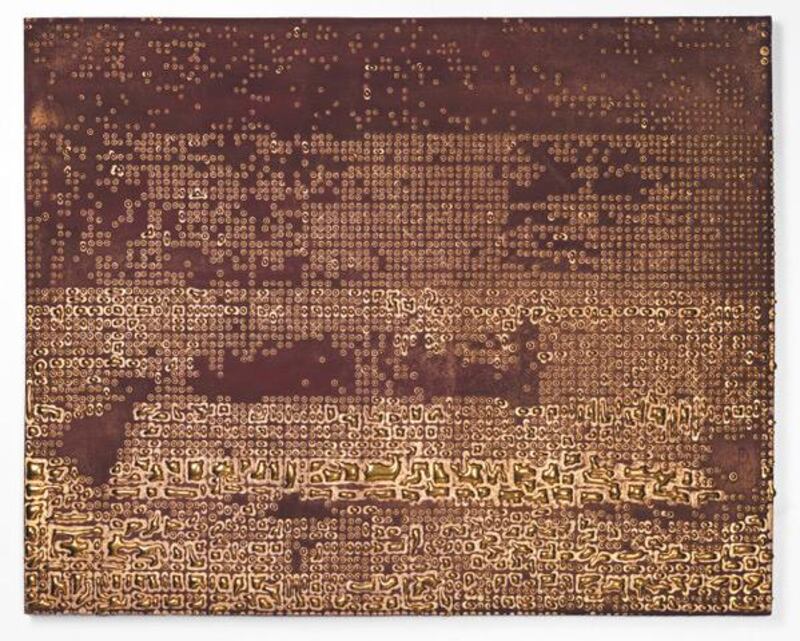If productivity is any guide to a curator’s standing, then Omar Kholeif, senior curator at the Museum of Contemporary Art Chicago (MCA), is a very successful curator indeed.
Born in Cairo and brought up in the United Kingdom, Kholeif’s star has been in the ascendant for more than a decade now, so it’s no surprise that the writer, curator, editor and sometimes filmmaker has been voted as one of the 100 most powerful people in the art world for the last three years.
Prior to joining the MCA in 2015, Kholeif was curator at the Whitechapel Gallery in London, a senior curator at the Cornerhouse and Home in Manchester as well as the Foundation for Art and Creative Technology in Liverpool, and artistic director of the Arab British Centre, where he founded Safar: The Festival of Popular Arab Cinema, which now travels worldwide.
Alongside the British-Egyptian’s two languages, there are his three MAs and a PhD, more than 20 publications and positions as curator and co-curator of projects such the Abraaj Group Art Prize and 2013 Liverpool Biennial, Focus: MENAM at New York’s Armory Show and Cyprus’s national pavilion at the 56th Venice Biennale, both in 2015.
Looking at Kholeif’s superabundant CV, one wonders when he ever finds time to sleep, but that didn’t stop him accepting another position last week when the MCA announced he would be leading its Global Visions Initiative, a programme dedicated to broadening the museum’s scope and base, both intellectually and geographically.
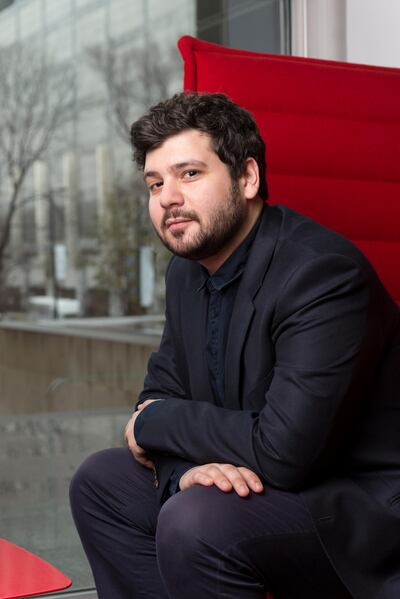
“One of the reasons I came here, is because I wanted the MCA to become one of the most global contemporary art museums in North America,” Kholeif tells me from his office in Chicago, multi-tasking by typing as we speak.
“I felt that America was a little behind in terms of its openness to different artistic concepts and territories, so it was a big challenge to come here,” he adds, combining unwavering self-confidence with total self-belief.
Since his appointment at the MCA in November 2015, Kholeif has worked with the museum’s Pritzker director, Madeleine Grynsztejn, to develop the Global Vision Initiative, first as a pilot programme and now full-time by supporting exhibitions, publications and acquisitions that are focused on art and artists from the Africa, South Asia, Latin America and the Middle East.
READ MORE: Abu Dhabi Art announces its participating galleries for 2017 event
On Thursday, it was announced that Kholeif would also be joined on the initiative by co-chairs Louis Susman, a lawyer, retired investment banker, and former United States’ Ambassador to the United Kingdom and his long-time collaborator, the Sharjah-based art collector and commentator, Sultan Sooud Al Qassemi.
Kholeif and Al Qassemi have known each other for years, and during the curator’s time at London’s Whitechapel Gallery, they worked together to mount Barjeel Art Foundation’s Collection: Imperfect Chronology, a four-part show which ran from 2015 to 2017 featuring works from the Sharjah-based collection.
If it wasn’t for his track record, Kholeif’s ambitions might sound like hubris, but as it is they sound more like a statement of inevitable fact.
“I am thrilled to be leading the Global Visions Initiative with the support of our extraordinary co-chairs whose expertise and experience I trust and value,” Kholeif said in a statement at the time of the announcement. “Together, I believe we have the potential to re-shape art history and make the MCA the most global and forward-thinking contemporary art museum in North America.”
Kholeif's next exhibition at the MCA, Backstroke of the West, the first US solo show and survey of the work of the Iraqi-American artist Michael Rakowitz, will open in seven weeks, and the curator is also working on a forthcoming exhibition and publication about the Nigerian artist Otobong Nkanga, which will open next March.
Following these shows in October 2019, Kholeif will open an enormous group show at the MCA, Many Tongues: Art, Language, and Revolution in the Middle East and South Asia, which will use 250 artworks to explore the relationship between the regions, from 1947, to the present.
When we speak, however, it is about Kholeif's forthcoming show in Abu Dhabi, Focus: Beyond Territory, which will also be one of the key components of this year's Abu Dhabi Art.
An exhibition within the fair, Focus: Beyond Territory will feature work from seven international galleries including Marian Goodman Gallery, who will be exhibiting a major tree sculpture by the Italian sculptor Giuseppe Penone – one of only two artists who have received a contemporary commission from the Louvre Abu Dhabi.
READ MORE: How Dyala Nusseibeh is bringing change to Abu Dhabi Art
"I've been thinking very much about Abu Dhabi as the capital of the UAE, and wanted to show iconic works," Kholeif tells me. "This encouraged me to adopt a less is more approach and to select larger single works, but more than anything, I like to work in the Middle East because I like to engage audiences there, and I'm curious about how they'll respond to a show that puts historical works into a different context."
For Kholeif, that context is the need to rewrite the history of art by including new artists, locations and perspectives, and to that extent, Focus: Beyond Territory can be seen as an extension of the curator’s work at the MCA.
“I think one of the things I’m trying to do here, is to put Middle Eastern and South Asian artists in conversation with western artists, to be able to say that there is a canon of art history that exists beyond the specificity of geography and location,” the curator says.
“There are formal concerns that are shared, and there is a pollination of ideas because artists move across geographies and throughout the diaspora.”
Despite having worked extensively in Sharjah and Dubai, Focus: Beyond Territory will be Kholeif's first show at Abu Dhabi Art, and his first opportunity to work with another old friend, the show's new director, Dyala Nusseibeh.
“When Dyala took up the post at Abu Dhabi Art, she invited me to curate a section, but I said that I would only do it if I could have free rein to have a curatorial voice and to show something very different to a Middle Eastern audience,” Kholeif insists, describing a show that will take notions of territory and landscape as its starting point.
“I wanted to do an exhibition that looks at the social, cultural, political and economic landscape of today,” he explains. “So I’ve used the theme of landscape as both a formal gesture, as well as a conceptual gesture in the work of artists.”
How visible Kholeif's expanded sense of landscape is, will only become evident at Abu Dhabi Art, but the broader notion of territory that has informed his curatorial decisions, can already be seen in a series of conversations in the works such as the one at the heart of Bloodlines, a collaboration between the Indian and Pakistani artists Nalini Malani and Iftikhar Dadi.
“It’s a ceramic piece that draws a line between India and Pakistan on a painted map of partition,” Kholeif explains. “This is also the 70th anniversary of partition, so I thought it would be a very opportune moment to show the work, because it is historic, and even though its representation of landscape is abstract, it’s deeply politicised and that led me to the concept of beyond territory.”
The sense of territory as an ideological, rather than a purely geographical space, can also be seen in the work of the Lebanese artists Khalil Joreige and Joana Hadjithomas, whose work on the Lebanese rocket society has explored notions of extra-territorial Pan-Arabism in the 1960s, that was eventually destroyed by conflict and war.
READ MORE: Venice Biennale 2017: UAE National Pavilion is an artists’ playground
If such works embody the notion of a disembodied territory, the conversation that Kholeif hopes to establish between the works of the Iraqi artist Hayv Kahraman and Pakistan’s Shahzia Sikander, will explore different approaches to a shared art historical landscape.
“Hayv Kahraman is taking Orientalist motifs and ideas and recasting them, while Shahzia Sikander is taking the tradition of 16th century Mughal court painting and repositioning that in drawing, painting and animation,” Kholeif says.
“So you have these two artists who are both taking historical and traditional motifs and reinterpreting them for a contemporary context.”
If the work of artists such as Kahraman, Hadjithomas and Joreige are already well known in the UAE, Kholeif’s pulling power is such that he has been able to attract exhibitors such as Sprüth Magers, who will be presenting a ceramic work by the deceased German artist Otto Piene.
“Sprüth Magers is, I believe, one of the most important contemporary galleries in the world, but they’ve never exhibited before in the Middle East, so that is also something I was thinking about. How do I bring in particular galleries and voices that might not have been seen or heard before in the region?” Kholeif says.
“I want to promote these specific artists because their work is very important and that, for me, is the primary thing. Having this conversation with you is not about me, it’s about these artists and me wanting to promote their work to as broad as possible an audience.”
Abu Dhabi Art will run from November 8 to 11.
